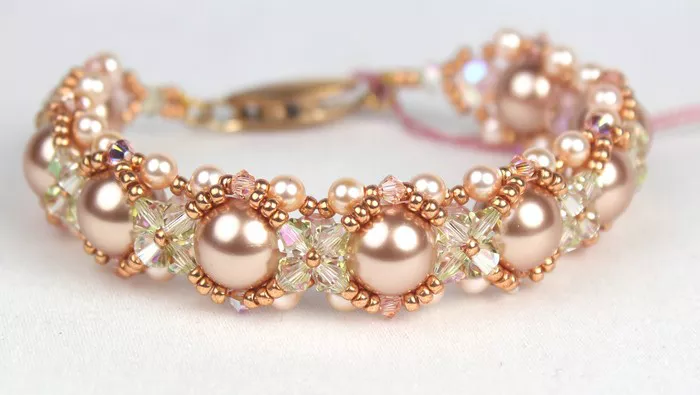Wearing bracelets is a common practice for accessorizing during waking hours, but what about wearing them while sleeping? This question raises concerns about comfort, safety, and potential effects on both the wearer and the bracelet itself. In this comprehensive article, we will explore the various aspects of sleeping with bracelets on, including the types of bracelets, potential benefits, risks, and practical considerations. By the end, you’ll have a clearer understanding of whether sleeping with bracelets is suitable for you and how to approach it responsibly.
Types of Bracelets
Before delving into the implications of sleeping with bracelets, it’s essential to understand the different types of bracelets commonly worn. These include:
Metal Bracelets: Made from metals such as gold, silver, platinum, or stainless steel, metal bracelets vary in design from delicate chains to chunky cuffs. They can be adorned with gemstones, engraving, or other embellishments.
Beaded Bracelets: These bracelets feature beads made from various materials such as gemstones, glass, wood, or plastic strung together on an elastic band or wire.
Leather Bracelets: Often featuring natural or synthetic leather straps with metal or bead embellishments, these bracelets are popular for their casual and rugged appearance.
Smart Bracelets: Also known as fitness trackers or smartwatches, these devices monitor health metrics, track activity, and sometimes offer sleep tracking features.
Potential Benefits of Sleeping with Bracelets On
1. Psychological Comfort
For some individuals, wearing a favorite bracelet to bed provides psychological comfort akin to wearing a lucky charm or sentimental piece of jewelry. This emotional attachment can contribute to a sense of security and relaxation, potentially aiding in better sleep quality.
2. Health and Wellness Tracking
Certain smart bracelets designed for fitness and health monitoring may include sleep tracking capabilities. By wearing these devices overnight, users can gather data on their sleep patterns, including duration, quality, and stages of sleep. This information can be valuable for individuals interested in optimizing their sleep hygiene and overall well-being.
3. Convenience
Wearing a bracelet that doubles as a timepiece or alarm clock can be convenient for those who prefer to have quick access to these functions without reaching for a bedside clock or smartphone.
Potential Risks and Considerations
While there may be perceived benefits to sleeping with bracelets on, several risks and practical considerations should also be taken into account:
1. Comfort and Discomfort
The physical comfort of wearing a bracelet to bed varies greatly depending on its material, design, and the individual’s sensitivity. Metal bracelets, for example, may dig into the skin or catch on bedding, disrupting sleep. Beaded bracelets could also be uncomfortable if they press against the wrist during sleep.
2. Skin Irritation and Allergies
Continuous wear of certain materials, particularly metals like nickel or alloys, can lead to skin irritation or allergic reactions over time. Individuals with sensitive skin or known metal allergies should be cautious about wearing bracelets overnight.
3. Damage to Bracelets
Sleeping with bracelets on can subject them to excessive wear and tear, especially if they contain delicate components like gemstones or intricate designs. Movements during sleep, such as tossing and turning, may inadvertently pull on bracelets or cause them to snag on bedding, potentially damaging the bracelet or causing injury to the wearer.
4. Hygiene Concerns
Bracelets worn continuously, including during sleep, can accumulate dirt, sweat, and bacteria. Regular cleaning is necessary to maintain both the bracelet’s appearance and the wearer’s skin health.
See Also: Can a Girl Give a Guy a Bracelet?
Practical Advice for Sleeping with Bracelets
If you choose to sleep with bracelets on, consider the following practical advice to minimize risks and maximize comfort:
1. Choose Comfortable Materials and Designs
Opt for bracelets made from materials that are comfortable against your skin and unlikely to cause irritation or discomfort during sleep. Smooth, rounded designs are preferable to sharp edges or protruding details.
2. Size and Fit Matter
Ensure your bracelet is neither too tight nor too loose. A snug fit prevents excessive movement during sleep, reducing the risk of snagging or discomfort.
3. Remove Before Bed (if necessary)
If your bracelet is uncomfortable or poses risks during sleep, such as potential damage to the bracelet or injury to yourself, consider removing it before bed and putting it back on in the morning.
4. Clean Regularly
To maintain hygiene and prevent skin irritation, clean your bracelet regularly according to the manufacturer’s guidelines. Use a soft cloth and mild soap to gently remove dirt and oils.
5. Consider Smart Bracelets Wisely
If using a smart bracelet for sleep tracking, ensure it is designed for comfortable overnight wear and offers accurate data collection without compromising sleep quality.
Conclusion
Ultimately, the decision to sleep with bracelets on depends on personal preference, comfort, and the type of bracelet worn. While some individuals may find psychological comfort or practical benefits in wearing bracelets to bed, others may prefer to remove them for reasons of comfort, safety, or hygiene. By understanding the potential benefits, risks, and practical considerations outlined in this article, you can make an informed decision about whether sleeping with bracelets on aligns with your lifestyle and preferences. Whatever you choose, prioritizing comfort, safety, and proper care ensures that your bracelet remains a cherished accessory for years to come.

